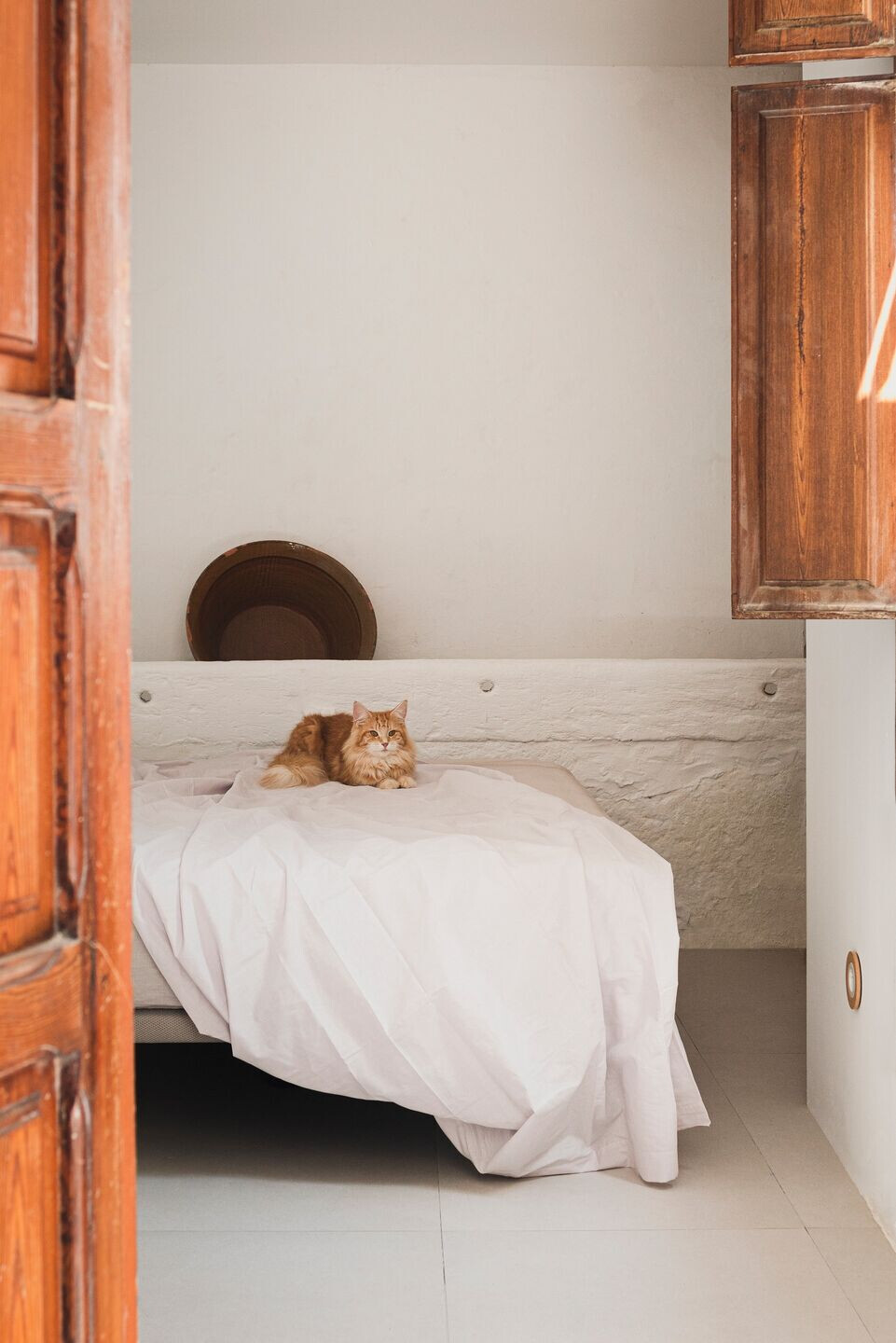William Morris, once said: “The past is not dead, it is living in us, and will be alive in the future which we are now helping to make.” This is the premise on which we approach the rehabilitation and expansion of this house in the historical centre of Alcàsser, a metropolitan town nested amongst València´s agricultural plains.

John Ruskin, on the other side, said something more radical: “Buildings belong partly to those who built them, and partly to all the generations of mankind who are to follow us. The dead still have their rights over them; those which they laboured for, the praise of achievement or the expression of religious feeling, or anything else they intended to be permanent - we have no right to obliterate that. What we have ourselves built, we are at liberty to demolish, but what other men gave their strength and wealth and life to accomplish, cannot be lost with their death”. Ruskin is opposed, therefore, to any intervention that involves the destruction of what others have built. Even if this could be an interesting idea, it limits the possibility of incorporating new uses for these buildings, and thus limits the survival of the traditional architecture.

In this project, however, we try to preserve as much as possible, leaving remnants of the original elements as a tribute to those who built, rebuilt or lived in this house. We try to create an architecture that remembers architecture without an architect, which is the result of collective knowledge and fruit of the accumulated experience of the generations that preceded us.

Domestic architecture is the reflection of those who inhabit it, and houses are the result of the needs and changes during the life of the building. Houses show the lives of these people, their possibilities, wishes and aspirations, their mistakes and their achievements. Our houses grow and change with the years, and are reinvented until they are reduced to the imagination of those who inhabited them. Interventions of greater or lesser quality, result in fragmented buildings, lacking sense as a whole, where each material and construction technique bears witness to its time.

This intervention in the building seeks to highlight the scars of the parts that are removed with the aim of adapting the house to a contemporary habitat. Thus, on the walls there are remnants of the ceilings, the vault of the old staircase and the walls. Following the idea that every intervention is witness of its time, we include new materials that are easy to identify due to the pristine images that contrast with the roughness and imperfection of the older layers of the original construction. Therefore, we use self-supporting plasterboard partitions as well as large-format, uniform floors that contribute to the fluidity of the space.

The house is designed as a sequence of spaces that progressively enters an inner world typical of traditional Valencian architecture: the corral, a small backyard. As we enter the house we gain privacy until we find the living room, which takes a breath of tranquillity and freshness through a custom folding window. In the centre of this corral, an old lemon tree pays tribute to those who lived in this house and harvested its fruits for generations.

The subsequent promenade is designed to be a reminder of those houses that still today occupy the historic centres of the towns of the Valencian agricultural plains. The spaces are linked with different functions, not always defined, but with meaning: an entrance that reveals the entire original volume of the house and its sloping roof, a study room that is transformed into a guest room, a small library, a living space, a dining room, and more... The space flows continuously, interrupted only by the memory of a door that filters and protects the true heart of the house: a corral that wants to be part of the room and a room that wants to be part of the corral. Beyond these spaces, in the depths of the house, a space appears, reserved for the most exceptional guests, those who deserve to enter the depths of the host's soul.

The partitions do not want to reach the ceilings, the rooms do not want to be closed. In this way, the original volume created by the gabled roof that was left empty and bare in the demolition, preserves its interpretation.
The first floor is dedicated to the main room as the only space on this level accommodating different uses in a way that breaks the idea of privacy in exchange for its privileged location in the volume of greatest significance.

At the rear, once the original volume of the first house has been surpassed, a pavilion was built by eliminating the extensions of little constructive value, to reinterpret them again. For this new space, which houses the day area, a set of two horizontal planes supported by four pillars is generated. The metal structure allows a language of our time with a space that contrasts with the first volume of the building.

This pavilion reinforces the relationship between the day area and the corral: a large opening is created between the walls, eliminating all intermediate supports and providing a custom folding window that facilitates a relationship between the spaces. At the same time, the placement of this window with respect to the planes allows the creation of an intermediate covered external space, which helps to dilute the line between interior and exterior in the manner of a Japanese engawa.



















































